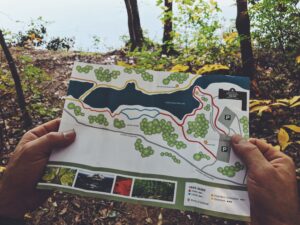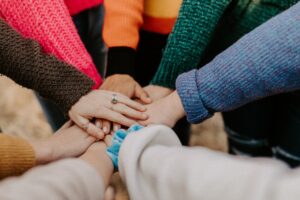Critical Considerations for Open Pedagogy
This resource will help you think carefully about the instructional choices, design decisions, and ethical considerations you make as you prepare to engage in open pedagogy with your students.
This resource will help you think carefully about the instructional choices, design decisions, and ethical considerations you make as you prepare to engage in open pedagogy with your students.

For learners who are using screen readers or are blind or low vision, math and chemical equations can be very difficult to understand or visualize. Additionally, when using LaTeX or other equation formatting tools, some screen readers cannot read the equations at all. By taking a few extra steps, OER authors and editors can ensure all users have access and understanding of the content.

For authors of open educational resources, it is important to know how to incorporate Indigenous knowledges into our OER while respecting community protocols and access to information. The 6 R’s of Indigenous OER provide a framework for authors incorporating Indigenous knowledges into their openly-licensed teaching and learning materials.

This document includes a guide designed to help H5P content authors avoid creating accessibility barriers for users. The purpose is to ensure the H5P activities are as accessible as currently possible…

This photo collection allows educators to represent Indigenous peoples in their OER so that Indigenous students can see themselves reflected in their learning materials.
A series of blog posts which highlight interactive technologies and pedagogies such as Fostering Meaningful Educational Experiences,
Cultivating Digital Well-Being as a Social Practice, Ethics as Design, and more!
Many wonder what role CC licenses, and CC as an organization, can and should play in the future of generative AI. The legal and ethical uncertainty over using copyrighted inputs for training, the uncertainty over the legal status and best practices around works produced by generative AI, and the implications for this technology on the growth and sustainability of the open commons have led CC to examine these issues more closely. We want to address some common questions, while acknowledging that the answers may be complex or still unknown.

This toolkit is intended as a guide for students who are engaging in open pedagogy. The toolkit defines open pedagogy, the benefits of open pedagogy, and the rights and responsibilities that come with being a student creator. Instructors may wish to use this toolkit as a resource to scaffold conversations about open pedagogy with their students and to appropriately prepare them for working in the open.

BOok Open Textbook Publishing Guide by University of British Columbia The UBC Library has created an Open Text Publishing Guide to help authors navigate the…

Book Chapter Structured Renewable Assignments by University of Washington Structured renewable assignments have the potential to create ally relationships between teachers and students, both of…

Book Open Pedagogy Approaches by Milne Library The book involves partnerships among faculty, library staff, and students in open pedagogy projects across disciplines. It spans…

Tools Tools for Creating OER by University of Regina There are a number of commercial and open source digital technologies available for the creation of…

WEBSITES Examples of Open Pedagogy by Misc These resources collect and share examples of open pedagogy practices, assignments, courses, and more! BROWSE THE OPEN PEDAGOGY…

Guidelines to keep in mind to ensure that the content of your OER is both diverse and inclusive.